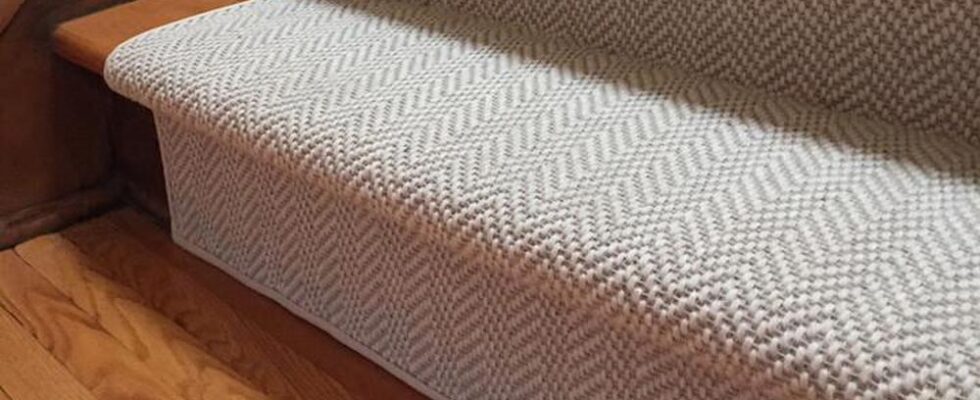Staircase carpets play a crucial role in enhancing safety and reducing the risk of slips on stairs in several ways:
Traction and Grip: Staircase carpets provide a textured and slip-resistant surface that offers better traction and grip compared to bare or smooth stair surfaces. The carpet fibers and backing create friction, making it easier for individuals to maintain their footing while ascending or descending the stairs. This reduces the risk of slips caused by the lack of traction.
Slip Prevention: Staircase carpets act as a barrier against slippery surfaces, such as polished or worn-out steps. They help absorb moisture, dirt, and debris that can accumulate on stairs, reducing the chances of slipping. The carpet’s absorbent properties contribute to maintaining a dry and safe surface, even in wet conditions.
Cushioning and Impact Reduction: Staircase carpets provide a cushioned surface that helps absorb the impact of each step. This can be especially beneficial for individuals with joint or mobility issues, as it reduces the strain on their joints and provides a more comfortable stair experience. The cushioning effect also contributes to reducing the severity of injuries in the event of a fall.
By providing traction, slip prevention, visual cues, cushioning, noise reduction, and durability, staircase carpets significantly enhance safety and reduce the risk of slips on stairs. They create a secure and comfortable stair environment, promoting confidence and peace of mind for individuals using the stairs.
How can Staircase carpets be effectively integrated with other interior designs and furniture?
Integrating staircase carpets effectively with other interior designs and furniture can create a cohesive and visually pleasing aesthetic.
Color Coordination:
Choose a staircase carpet color that complements the overall color scheme of the surrounding area. You can opt for a carpet that matches or blends with the wall color, furniture upholstery, or other decorative elements in the space.
Balance Patterns:
If your staircase carpet has a pattern, consider the existing patterns in the room. If there are already prominent patterns on furniture upholstery or curtains, select a carpet pattern that complements or harmonizes with them. Alternatively, you can choose a solid-colored carpet to create a subtle contrast or allow other patterns in the room to stand out.
Maintain Consistency:
If you have carpeting in other parts of the house, such as the hallway or landing areas, aim for consistency in carpet style or color. This creates a seamless flow throughout the space and avoids abrupt transitions. Consistency can be achieved by using the same carpet style or a complementary design that ties the different areas together.
Pay Attention to Scale:
Ensure that the size of the staircase carpet complements the scale of the stairs and the surrounding furniture. A carpet that is too small or too large for the staircase can create a disproportionate or awkward appearance. The carpet should cover the steps adequately without overwhelming the space or obstructing the view of the staircase design.
Coordinate with Furniture Upholstery:
If the staircase is near furniture pieces, consider coordinating the color or pattern of the staircase carpet with the upholstery of nearby furniture. This connection can create a cohesive visual flow and tie the staircase area into the overall design scheme.
Seek Professional Advice:
If you’re uncertain about integrating staircase carpets with your existing interior design, it can be helpful to consult with an interior designer or carpeting professional. They can provide expert guidance on color schemes, patterns, and overall design considerations to ensure a harmonious integration.


